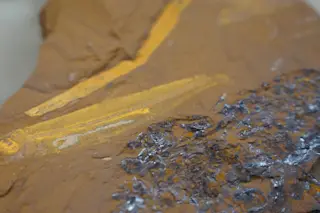Credit: Dan Piraro. Let's talk about Romer's Gap, not to be confused with the Gap of Rohan (though I would love to talk about that, too, as I am always up for a bit of Tolkien). Romer's Gap is an intriguing question mark in the fossil record that today loses a little of its mystery. On the far side of the gap, about 360 million years ago, we've got aquatic tetrapods — vertebrates with four limbs — which were at that point still pretty fishy (note: not actual scientific term). On the near side of the gap, beginning around 335 million years ago, tetrapods are already a diverse bunch of animals living quite happily on land, walking on legs and breathing air just fine, thank you very much. Romer's Gap is that period in between, when the tetrapod fossil record largely goes dark, leaving paleontologists to scratch their heads over ...
Tetrapod Triumph! Solving Mystery Of First Land Vertebrates
Discover the latest findings on Romer's Gap fossils that shed light on the transition from aquatic to terrestrial life.
More on Discover
Stay Curious
SubscribeTo The Magazine
Save up to 40% off the cover price when you subscribe to Discover magazine.
Subscribe













